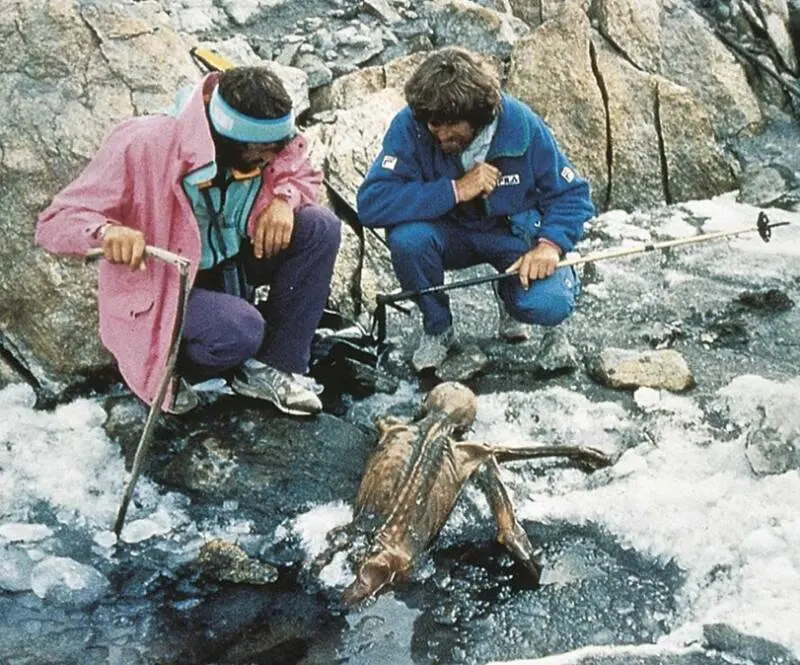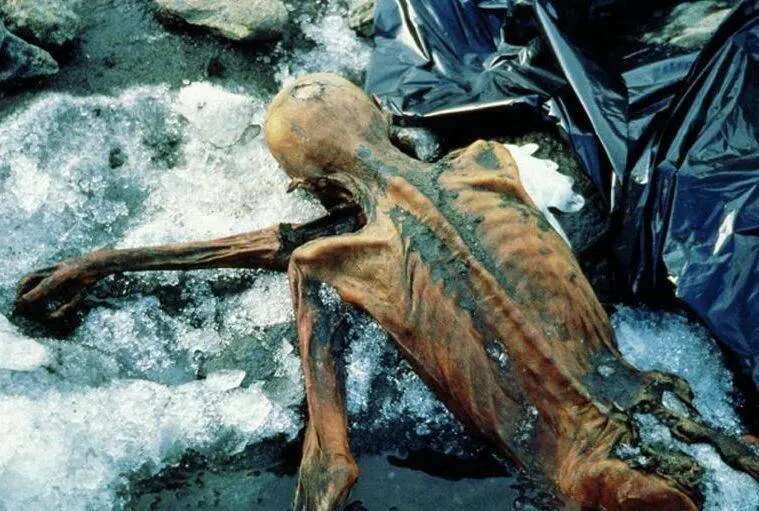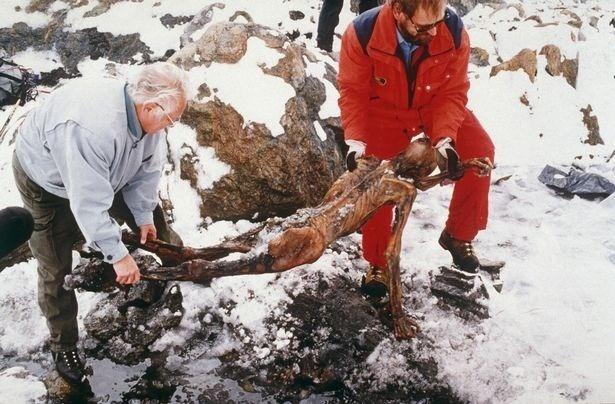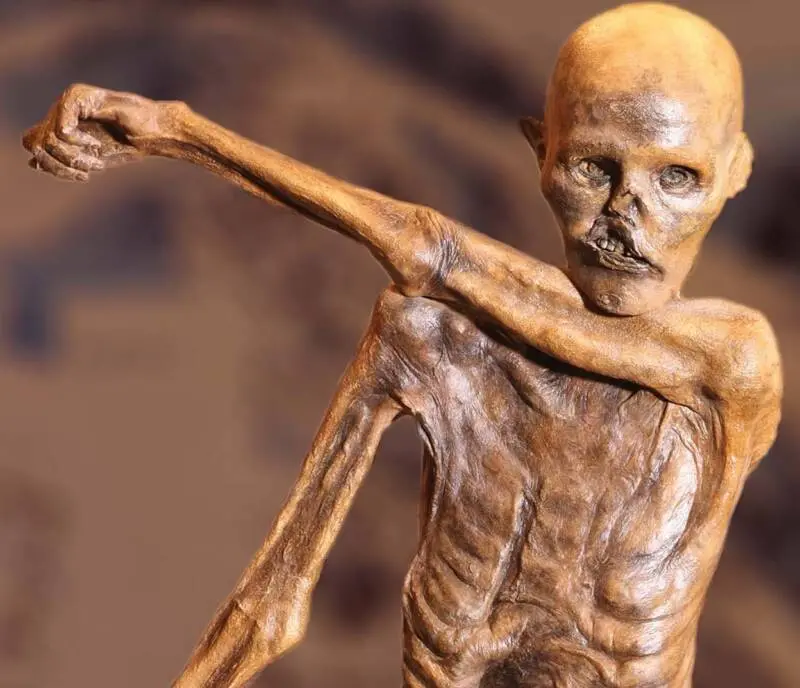Breaking News: The Astonishing Revelation of Ötzi the Iceman, the Oldest and Most Enigmatic Mummy in Human History, Unlocking Secrets from Over 5,000 Years Ago!
On September 19, 1991, two hikers found a frozen corpse in the Austro-Italian Alps. At the time, they had no way of knowing how historic their find was, as it was later revealed to be the oldest human ever found, now known as Ötzi the Iceman.

Not only was Ötzi found to be over 5,300 years old, but he was also the victim of murder. It is now believed that the Neolithic man was killed on the mountain before being naturally mummified by the freezing temperatures. In fact, the astonishing freshness of his body is still nothing short of mind-blowing today.
The accidental discovery of Ötzi the Iceman
When German tourists Helmut and Erika Simon came across the frozen corpse of Ötzi the Iceman on the glacier in the Schnalstal/Val Senales valley in 1991, the couple initially thought they had come across an unfortunate fellow mountaineer who had recently suffered a fatal accident.
Only Ötzi’s head and shoulders could be seen above the ice that froze the rest of his body. He lay face down most of the time.
Austrian rescuers who rushed to the scene, unaware of how old and delicate the find was, damaged the body as they tried to dislodge it from the ice. A pneumatic hammer damaged Ötzi’s hip and thigh, and his backpack and the bow he was frozen next to were also broken.
But over the next three days, a small team of archaeologists digging up the frozen body realized their mistake. After taking the corpse to a medical examiner’s office in Innsbruck, Austria, they determined it was at least 4,000 years old.
“Ötzi the Iceman,” as he was nicknamed by an Austrian journalist in reference to the site of his discovery in the Ötztal Valley Alps, was later confirmed to have died sometime during the Copper Age or Neolithic period between 3350 and 3100 BC, making him the oldest preserved human ever found.
But what made this find even more remarkable was that, unlike Egyptian and Inca mummies desiccated by desert climates, Ötzi was a “wet” mummy, found in a combination of perfect preservation where the glacier in which he died froze his body while the humidity of the ice preserved his organs and skin virtually intact.
What was life like in the Neolithic?

A close-up of the 5,300-year-old murder victim when she was found.
Because Ötzi was so well preserved, researchers were able to perform what was essentially a modern autopsy, providing a fascinating insight into what life was like for this man who lived 35 centuries ago.
Not only was he determined to be over 40 years old when he died, but Ötzi was probably also thin, weighing 50 kilograms and standing 1.60 metres tall.
He was also found to have intestinal parasites, stomach ulcers, arthritis and Lyme disease. He was also found to share a genetic affinity with the inhabitants of the islands of Sardinia and Corsica and may have been lactose intolerant.
The contents of her stomach also showed several types of pollen, suggesting that she did not just die in spring or summer, but had traveled across different elevations in the mountains shortly before her death.

Meanwhile, the highly preserved state of his skin also showed that he had 61 tattoos, which had been made by rubbing charcoal into small cuts.
Before Ötzi, scientists could only guess at what life was like in the Copper Age. But from his clothing, researchers deduced that 3,500 years ago people wore cloth leggings and animal skins. Feathers from Neolithic man’s arrows also suggested that his people understood general ballistics.
Although the frozen body of Ötzi the Iceman provided a wealth of information to scientists, the cause of his death was not discovered until a decade after he was found. That’s when a scan using new X-ray technology revealed something lodged in the old man’s left shoulder that had previously been overlooked: an arrowhead.
Investigating Copper Age Murder
A murder is still a murder, no matter what century it happened in, so the museum where Otzi now rests called in Detective Inspector Alexander Horn of the Munich police to see what he could find out.
Inspector Horn was surprised to note that the body was “in better condition than recent homicide victims I have worked on that were found outdoors,” despite the fact that this particular corpse predated the Pyramids.

Public domainÖtzi was in such a good state of preservation that researchers were able to practically perform a modern autopsy on him.
In 2012, a report was published speculating on how the Iceman died. The nature of the wound suggested he had been shot in the back, but the fact that the victim’s belongings had not been stolen led Inspector Horn to conclude that it was a personal homicide, although no arrests are likely.
But the mysteries surrounding Ötzi the Iceman extend far beyond his murder. Since his body was removed from the place where it had rested for thousands of years, rumours have spread that there was a curse placed on anyone who disturbed it.
In fact, Helmut Simon, one of the hikers who found Ötzi in 1991, died during a freak snowstorm and was himself found buried under ice and snow not far from where he made the history-changing discovery.
Ötzi is currently kept in a freezer at the South Tyrolean Archaeological Museum in Bolzano, Italy. It is estimated that between 10 and 15 scientists apply to study his remains each year.






